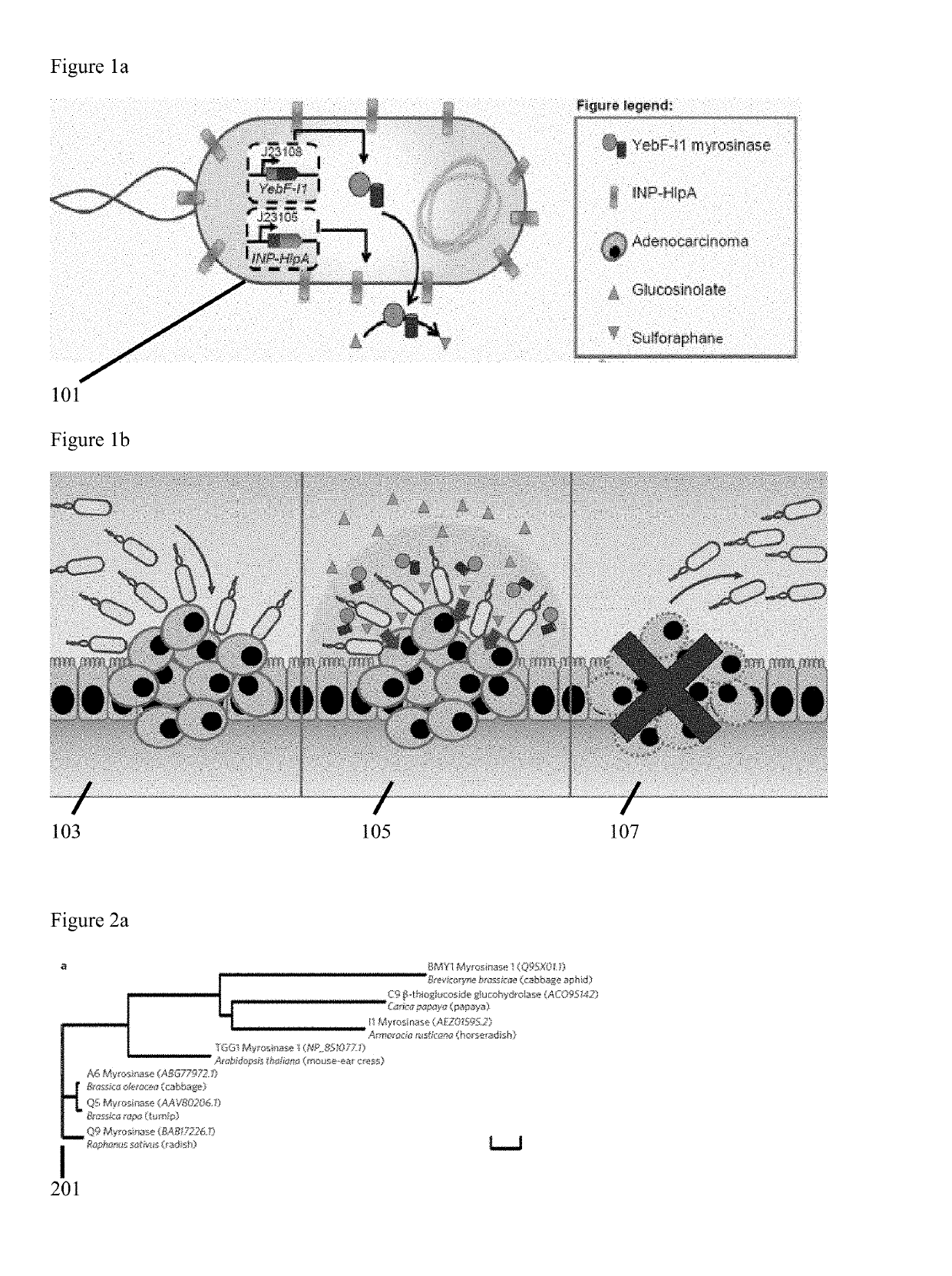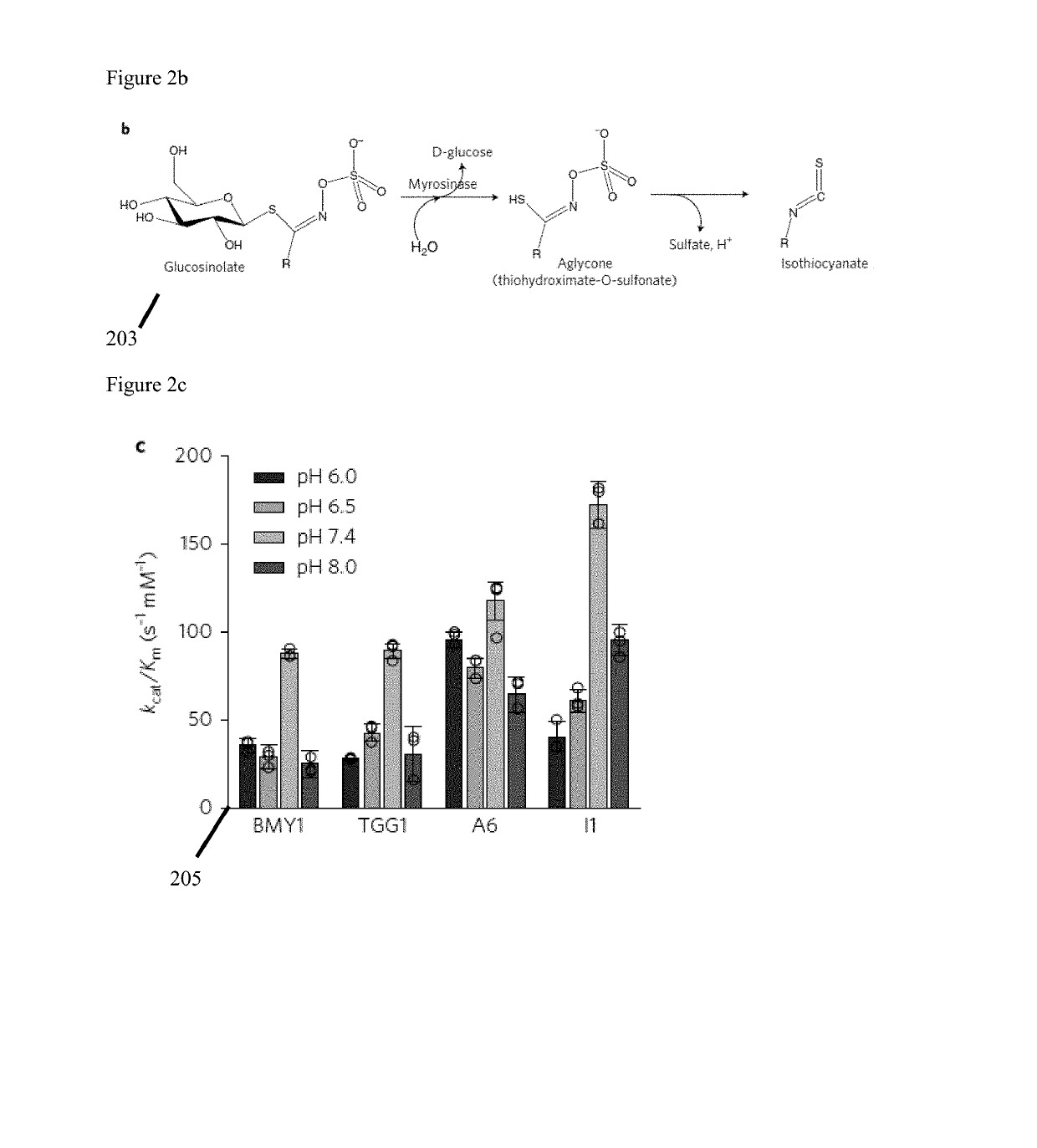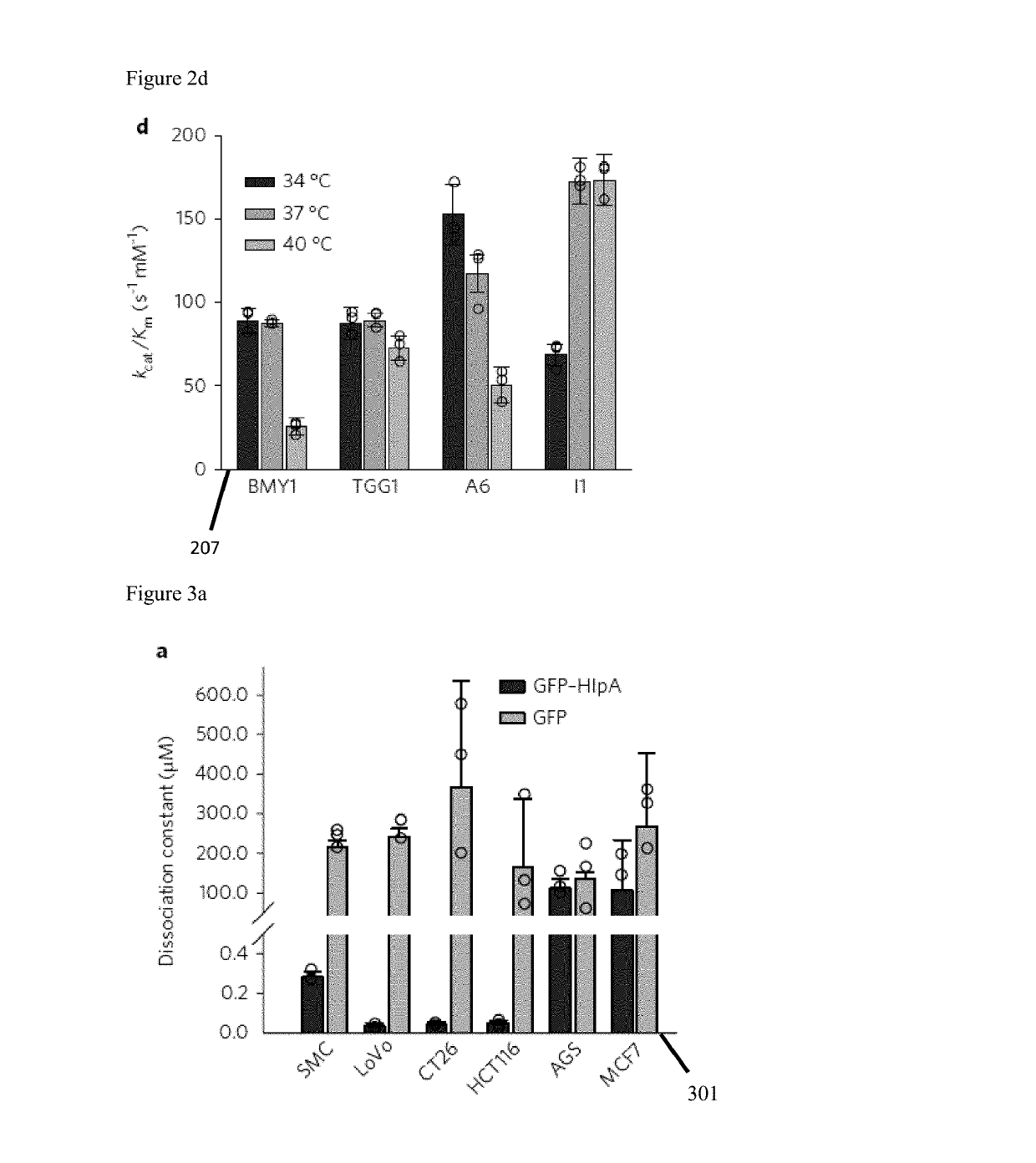Engineered Therapeutic Probiotic System and Method
a probiotic and engineered technology, applied in biochemistry, glycosylases, enzymes, etc., can solve the problems of high consumption, low bioavailability of chemopreventive metabolites, and high percentage of late stage colorectal cancer diagnosis, and achieve high cost, high invasiveness, and high extraction rate.
- Summary
- Abstract
- Description
- Claims
- Application Information
AI Technical Summary
Benefits of technology
Problems solved by technology
Method used
Image
Examples
example 1
[0063]In the illustrative examples contained herein, the aims of the claimed invention are achieved by reprogramming commensal Escherichia coli Nissle 1917(EcN) (101) to bind to the heparan sulfate proteoglycan (HSPG) on the cancer cell surface and to secrete myrosinase for conversion of dietary-glucosinolate to sulforaphane (FIG. 1a). The produced sulforaphane inhibits growth and promotes apoptosis in cancer cells, resulting in colorectal tumor clearance. Upon clearance, the reprogrammed microbes detach from the colorectal tissue and are passed out in the fecal matter (FIG. 1b). This combinatorial approach resulted in almost complete cancer cell inhibition in vitro. In a murine colorectal cancer model, we observed smaller tumors and a 7-fold reduction in tumor occurrence compared to treatments with the engineered microbes or dietary glucosinolate alone.
[0064]With greater particularity, FIG. 1 depicts Eda-I1-H1pA for adenocarcinoma clearance. FIG. 1a illustrates an embodiment of the...
example 2
[0065]Selection of the genetic chassis is illustrated in FIG. 2, screening for glucosinolate-converting myrosinase enzymes. FIG. 2a depicts the phylogeny (201) of the selected myrosinases based on protein sequences. FIG. 2b illustrates myrosinase catalysis of glucosinolate 203. FIGS. 2c and 2d are graphical illustrations 205, 207 of catalytic efficiency of the template enzymes BMY1 and TGG1 against candidate enzymes A6 and I1 in various c. pH and d. temperature conditions (n=3 independent experiments, each measurement performed in triplicates; mean±s.d.).
[0066]FIGS. 3a, 3b and 3c detail in vitro screening for H1pA binding specificity. FIG. 3a is a graphical illustration (301) of dissociation constant (Kd) of GFP653 tagged H1pA against various cancer cell lines (n=3 independent experiments, each measurement performed in triplicates; mean±s.d.). FIG. 3b illustrates microscopic images (303) of GFP-tagged H1pA (green) binding on various cancer cell lines with nucleus stained with DAPI (...
example 4
Results
[0097]Screening for improved β-thioglucosidase. The activity and stability of myrosinase, a β-thioglucosidase that hydrolyzes glucosinolate to sulforaphane, varies at differing pH and temperature; in a preferred embodiment the selected enzyme needs to function under physiological colorectal conditions. The healthy colon pH averages 6.6, while it is 7.0 and 6.7 in patients with adenoma and carcinoma, respectively. In addition, the temperature of the human intestinal tract ranges from 36° C. to 40° C. depending on the individual's metabolic state. In the illustrative example five plant-derived myrosinase orthologues with minimal glycosylation sites and the absence of the co-factor-binding sites using the BLAST search and the Enzyme Function Initiative—Enzyme Similarity Tool (EFI-EST), are compared to the well-characterized myrosinases from Brevicoryne brassicae (BMY1) and Arabidopsis thaliana (TGG1) (FIG. 2a and FIG. 7).
[0098]In a preferred embodiment, the myrosinases derived f...
PUM
| Property | Measurement | Unit |
|---|---|---|
| retention volume | aaaaa | aaaaa |
| retention volume | aaaaa | aaaaa |
| temperature | aaaaa | aaaaa |
Abstract
Description
Claims
Application Information
 Login to View More
Login to View More - R&D
- Intellectual Property
- Life Sciences
- Materials
- Tech Scout
- Unparalleled Data Quality
- Higher Quality Content
- 60% Fewer Hallucinations
Browse by: Latest US Patents, China's latest patents, Technical Efficacy Thesaurus, Application Domain, Technology Topic, Popular Technical Reports.
© 2025 PatSnap. All rights reserved.Legal|Privacy policy|Modern Slavery Act Transparency Statement|Sitemap|About US| Contact US: help@patsnap.com



